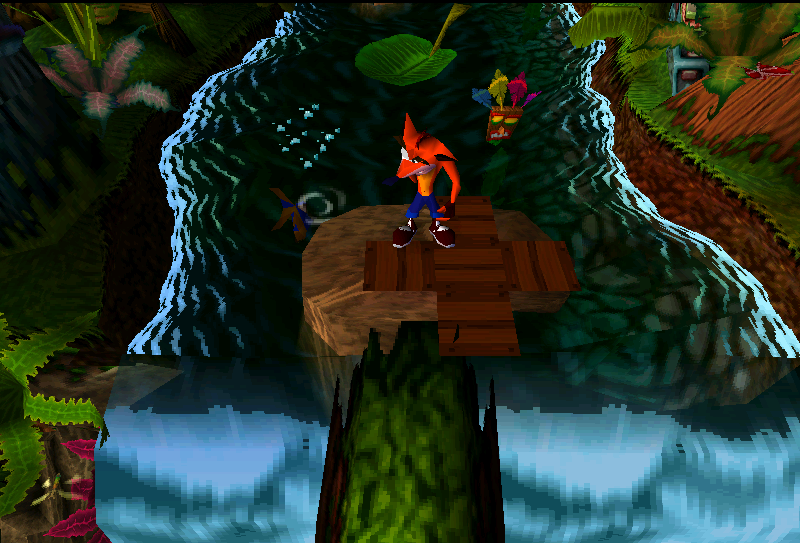Designing ‘Organic’ Difficulty: A Cognitive Neuropsychology Approach (1: Introduction)!
Current difficulty systems often focus on fixed metric manipulation to appease players when it comes to difficulty, but through the use of a different cognitive neuropsychology lens, can a more 'organic' method to game design and difficulty be produced?

*This is the introduction to a series of articles on ‘cognitive neuropsychology’ difficulty implementation (1/5)*
There are a multitude of aspects which must be considered when designing video game content; but one which has the most contentious application within games is that of video game difficulty. There are any range of implementations, development teams contemplate utilising to make their title attractive to the market. There are those that would argue that difficulty should be implemented as the ‘designer envisions it!’ with a focus on the narrative (which works in cases like ‘The End is Nigh’), however, this approach might not be the most suitable for especially games attempting to reach larger audiences. Conversely, the other end of the scale puts forth a ‘the player is king!’ approach, which results in user experience research, an abundance of testing, perhaps early release betas and so forth to balance the game to suit the needs of the demographics the development team wishes to target. The latter approach allows a deeper understanding of the player base and may also provide insight into the viability of the content. However, with regards to the difficulty in content, both approaches often culminate in a fixed difficulty (usually with an ‘easy’, ‘medium’ and ‘hard’ player profile selection for the latter approach). For the most part, this is suitable enough for a range of players to consume the content and enjoy it; but for another wide range of potential players none of the fixed difficulty ‘profiles’ they have the choice of suit the needs of their ‘psyche’. Therefore, recent trends tend towards adding ‘special modes’ (often retrospectively) for players who want to embed themselves into the narrative without the fuss of the game being ‘too hard’. However, this implementation, whilst making the game more accessible, may lead to a ‘static’ experience for these players with tedium when completing the necessary objectives to reach the next story ‘reward’.
‘So, what is the alternative?’
There are some other implementations of difficulty in digital games content which have been utilised to counter the problems fixed difficulty produces for some players; these are often lumped together under the ‘dynamic difficulty adjustment’ heading. In these cases, developers attempt to understand the player and allow the difficulty to adapt to the needs of the player through data collected about them as they interact with the content. Although, this process has its own issues especially with regards to ‘contradicting the will of the players’ which Smeddinck (in ‘How to Present Game Difficulty Choices?’) states could be potentially harmful to the player experience. Whilst this may be true for especially transparent implementations, it is also true for fixed difficulty systems where the difficulties available fail to appease the player’s needs. Indeed, in early examples of dynamic implementation the systems felt more like an ‘attempted appeasement’ than trying to understand the player. Crash Bandicoot for example produced a ‘damage shield’ in the form of an ‘Aku Aku mask’ when the player hit a pre-set number of consecutive failure states. Whilst this might help in certain instances (as with against enemy attacks or obstacles) a large # of death states could be caused through dropping into holes and so forth which produce instant death states for the player, ‘Aku Aku’ or not. Whilst the designers may have wanted the game to not be ‘too easy’ there are other methods which might have been applied to aid the player especially in the instance where platforming is the central gameplay loop of the content. Without going through the entire backlog of difficulty implementations (which might take a while!) to expedite the process this series of articles suggests that a more ‘organic’ difficulty system might be produced through the utilisation of cognitive neuropsychological concepts, which are used as a basis for designing a dynamic system suited to the player psyche.

Even Aku Aku can’t save you from falling!
‘Cognitive Neuropsychology, but Why?’
Cognitive Neuropsychology both allows discussion of the genesis and execution of specific information processing tasks in the brain and further reveals mechanisms that are concerned with normal brain functioning; it is at the foundation of human interaction with the world. In practical terms, cognitive neuropsychology when applied to games, can offer up an explanation of the processes players go through to interact with content and allow developers, user researchers and so forth a basis for providing insights into designing with the player in mind.
During a recent research project, I utilised cognitive neuropsychology whilst using an observational methodology to gain some insight into how players reacted to current implementations of difficulty and to provide some analysis to propose ways in which efficacy, skill growth and enjoyment could be better fostered. To do this, there were three main areas of discussion:
Visual and Auditory Attention,
Memory and Processing,
Motor Control and Growth
These areas cover (most) of the range of player engagement with content, also forming the basis of discussion for this series of articles which will seek to use case studies to illustrate methods through which designing ‘personalised’ and ‘organic’ difficulty is possible.
‘Give an Example, then!’
Thus far this article has focused on giving some background to the reasons this series should even exist; but to round off this introduction an example of where and how cognitive neuropsychological ideas can be applied (at least at the design level) is to be discussed. The example below is taken from extrapolated data of the observational study mentioned earlier.
Let’s consider an example taken from Housemarque’s Resogun, where a statement by a multitude of the participants involved not knowing what was ‘hitting them right now’. There are any number of factors which could be considered when exploring the difficulty players encountered. First, distinctions need to be established between the ‘detection’ and ‘orienting’ in a player’s interaction with visual stimuli (in the case of a game this is all elements displayed on screen). For example, saccadic eye movements (the rapid movement of the eyes from one position to another, like ‘jumps’) could be available before the target stimulus has even been detected! Essentially, there is an initial ‘scan’ (known sometimes as ‘orientation’) of the player’s attention which can produce some rudimentary information (lines, colours and so forth), but it is possible dangers and other obstacles (bullets, enemies) may not yet have been ‘detected’. The detection time however, is affected by a players knowledge of which elements to pay attention to; as such, for many players spending a sufficient amount of time interacting with game content will reduce issues in this area. Indeed, targets in memory can be buffered and then updated within a retinoptic coordinate (The projection of image(s) to a brain, preserving the spatial relations as received by the retina) as the saccadic movements associated with the initial ‘scan’ are produced. Therefore, when thinking about how to produce effective GUIs, level geometry etc, perhaps giving the player some idea of where they will always find these elements works best; especially with content with a fixed view like Resogun.


Screenshot taken from Resogun; consider the use of a basic sample screenshot before play begins or while game loads to increase player proficiency.
In the case of dynamic applications it may make sense to instead of using just a ‘fixed’ screenshot before play, allow for the game to produce these ‘borders’ dynamically in the game dependent on the difficulty the player is having with keeping track (for example in Resogun; if the player keeps failing to collect the ‘human’ in time) it might make sense to have those elements gain contrast (through change of colour hue etc.) to the rest of the scene to remind players of the importance of them as a task.
Through the breakdown of information in a distinct method as modelled in the image above, the player might process and move their attention dependent on the current necessary task. The amount of lateral inhibition in a salience map is proposed to be task dependent and thus, ‘top-down’ regulated; in other words, previous experience of elements in vision aid processing speed from initial contact. Even though ‘vision’ is often considered a passive task when designing content (or as something that just happens) it actually requires problem-solving based on prior knowledge in some instances. Thus, there is an importance to defining where elements are present on screen, the consistency in colour of the elements (flexibly ‘coded’ in breakdown process) and also their relevancy to the task currently involved. So, in dynamic application instead of utilising a ‘fixed’ screenshot before play, maybe allow the game to produce these ‘borders’ dynamically depending on the difficulty the player is having keeping track (If the player keeps failing to collect human in this example) it might make sense to have these elements gain contrast (through change of colour hue etc.) to the rest of the scene to remind players of the importance of them as an additional task.
This is just one short example of a simple, but effective way cognitive neuropsychology could influence decision making when designing video game content and alternative avenues for adjusting difficulty that is not focused on ‘fixed’ metric manipulation. Future articles will further delve into more specific and practical implementations of cognitive neuropsychology in a game design process. Hopefully, this has been an enjoyable read, if there are any suggestions for improving the layout of articles for the future or any of the content itself please do comment.
Useful Sources for Further Understanding (Also linked at key points in the article):
www.gamasutra.com/view/news/303565/Punishing_difficulty_conveys_a_personal_story_in_The_End_is_Nigh.php
www.gamasutra.com/view/news/304208/To_attract_more_players_Horizon_Zero_Dawn_adds_easier_story_mode.php
hci.usask.ca/uploads/387-paper2754.pdf
www.allpsychologycareers.com/topics/cognitive-neuropsychology.html
www.sciencedirect.com/topics/neuroscience/lateral-inhibition
http://www2.psychology.uiowa.edu/faculty/hollingworth/prosem/SCAN_Posner_1980.pdf
http://science.sciencemag.org/content/294/5545/1350.long (Requies special log in access)
Read more about:
BlogsAbout the Author(s)
You May Also Like







.jpeg?width=700&auto=webp&quality=80&disable=upscale)








